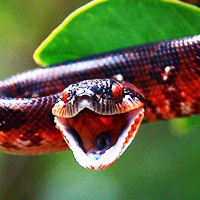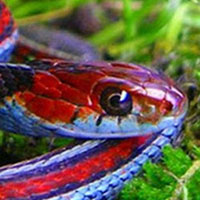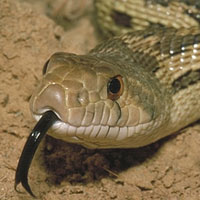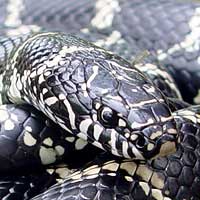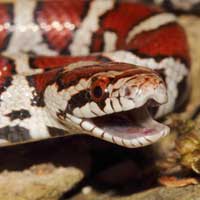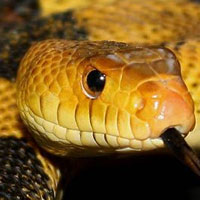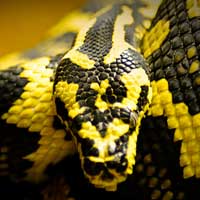A Complete Guide to the Calabar Burrowing Boa
The scientific name for the Calabar Burrowing Boa is Calabaria reinhardtii. It belongs to the family Boidae, which includes non-venomous, constricting snakes. However, it is sometimes placed in its own family, Calabariidae, due to its distinct characteristics.
Scientific Name: Calabaria reinhardtii
Snake Family: Boidae
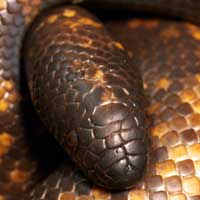
Introduction to the Calabar Burrowing Boa
The Calabar Burrowing Boa (Calabaria reinhardtii) is a fascinating species of snake that belongs to the family Boidae. Native to the rainforests and savannas of West and Central Africa, this small, non-venomous snake is renowned for its burrowing lifestyle and unique appearance. Its smooth scales and cylindrical body make it a master of camouflage and digging. Its calm temperament makes it a favorite among reptile enthusiasts looking for an exotic pet.
Where Does the Calabar Burrowing Boa Live?
The Calabar Burrowing Boa inhabits the dense forests and grasslands of West and Central Africa, including countries like Nigeria, Ghana, and Cameroon. These snakes are fossorial, spending most of their time underground or hidden in leaf litter, where they hunt and avoid predators.
To replicate their natural habitat in captivity:
- Provide a substrate like coconut fiber or aspen shavings for burrowing.
- Maintain temperatures between 75-85°F, with a basking spot of 90°F.
- Ensure humidity levels remain moderate, around 60-70%.
- Include hiding spots and plants to mimic their natural environment.
Here is a quick summary of their habitat needs:
| Habitat Element | Requirement |
|---|---|
| Substrate | Coconut fiber or aspen shavings |
| Temperature | 75-85°F (basking at 90°F) |
| Humidity | 60-70% |
What Does the Calabar Burrowing Boa Eat?
The Calabar Burrowing Boa is a carnivore, primarily preying on small mammals and birds in the wild. Their diet in captivity should mimic this as closely as possible, focusing on rodents such as mice or small rats.
- Feed juveniles every 5-7 days.
- Adults can be fed every 10-14 days.
- Ensure the prey size matches the snake’s girth for safe consumption.
Overfeeding can lead to obesity, so monitor feeding schedules closely. Allow 48 hours after feeding before handling to prevent regurgitation and stress.
Understanding the Behavior and Temperament of the Calabar Burrowing Boa
The Calabar Burrowing Boa is a shy and docile snake, making it an excellent choice for beginner snake keepers. They are nocturnal, meaning they are most active during the night, and they spend a significant amount of time burrowing or hiding.
Behavioral traits include:
- A preference for burrowing and remaining hidden during the day.
- A calm and gentle demeanor, rarely showing aggression.
- An inclination to ball up when threatened, similar to a ball python.
By providing a secure and enriched environment, these snakes can thrive in captivity without displaying stress-related behaviors.
How to Keep Your Calabar Burrowing Boa Healthy
With proper care, the Calabar Burrowing Boa can live up to 20 years in captivity. However, maintaining their health requires attention to detail and a clean environment.
Health tips include:
- Maintain consistent temperatures and humidity to prevent respiratory issues.
- Check regularly for signs of parasites, such as mites.
- Provide fresh water and clean the enclosure regularly to prevent bacterial infections.
Regular veterinary checkups can also help catch and treat health issues early, ensuring a long and healthy life for your snake.
Reproductive Habits of the Calabar Burrowing Boa
The Calabar Burrowing Boa is oviparous, meaning it lays eggs rather than giving live birth. Breeding usually occurs during the rainy season in their natural habitat. Females lay clutches of 2-4 eggs, which they incubate in burrows or other concealed locations.
Important reproductive facts:
- Incubation period lasts around 60-70 days at optimal temperatures of 82-86°F.
- Hatchlings measure about 8-10 inches in length.
- Females typically reproduce once a year, depending on their health and environmental conditions.
Creating a suitable breeding environment in captivity is key to successful reproduction.
Best Practices for Handling and Caring for Your Calabar Burrowing Boa
Handling the Calabar Burrowing Boa is straightforward due to its gentle nature. However, proper techniques ensure the snake feels safe and remains stress-free.
Handling tips:
- Approach the snake slowly to avoid startling it.
- Always support the snake’s body fully while handling.
- Avoid handling immediately after feeding to prevent regurgitation.
By respecting the snake’s natural instincts and handling it with care, you can build a trusting and rewarding relationship with your Calabar Burrowing Boa.
Other Snakes In This Species
 Argentine Boa
Argentine Boa Calabar Burrowing Boa
Calabar Burrowing Boa Colombian Rainbow Boa
Colombian Rainbow Boa Common Boa
Common Boa Cooks Tree Boa
Cooks Tree Boa Cuban Boa
Cuban Boa Desert Rosy Boa
Desert Rosy Boa Desert Sand Boa
Desert Sand Boa Dumeril Boa
Dumeril Boa Egyptian Sand Boa
Egyptian Sand Boa Emerald Tree Boa
Emerald Tree Boa Haitian Boa
Haitian Boa Hog Island Boa
Hog Island Boa Madagascar Ground Boa
Madagascar Ground Boa Madagascar Tree Boa
Madagascar Tree Boa Pacific Boa
Pacific Boa Red Sand Boa
Red Sand Boa Rough-scaled Sand Boa
Rough-scaled Sand Boa Rubber Boa
Rubber Boa True Red Tail Boa
True Red Tail Boa Western Rainbow Boa
Western Rainbow Boa




